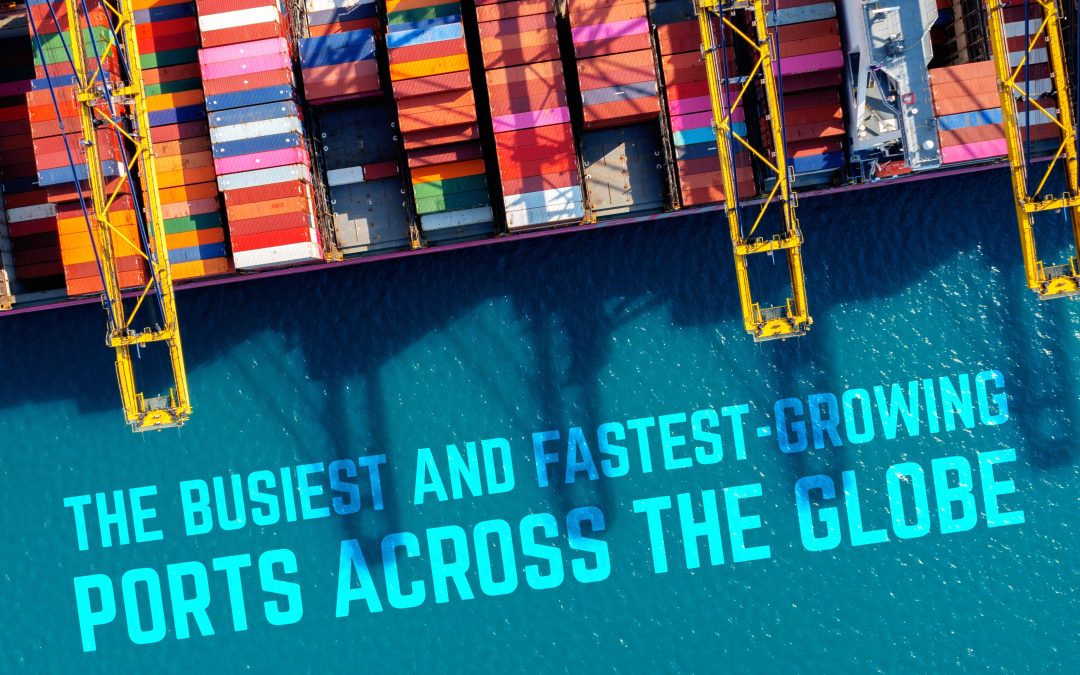When it comes to global trade, ports play an indispensable role in the movement of goods. Among these crucial nodes in the global supply chain, some stand out not just for their sheer volume but also for their rapid growth. The fastest growing ports are indicators of economic dynamism and emerging trade hubs that are reshaping global commerce.
The Rise of Fastest Growing Ports
Fate growing ports not only reflect strategic geographical advantages, but infrastructure investments and economic policies that boost trade. Apart from handling more containers these ports are also improving their facilities and services to support this growth.
Asian Giants: Leading the Pack
It’s no surprise that many of the fastest growing ports are in Asia, given the region’s explosive economic growth over the past few decades. Let’s dive into some of these bustling harbors:
Shanghai, China:
Shanghai Port is often the poster child of rapid port development. It has held the title of the world’s busiest container port since 2010. The port’s continuous expansion and modernization efforts have kept it at the forefront of global trade. The Yangshan Deep Water Port, part of the Shanghai port complex, is a marvel of engineering that significantly contributes to its capacity.
Ningbo-Zhoushan, China:
Another Chinese port, Ningbo-Zhoushan, has seen remarkable growth. The port has the advantage of a deep-water harbor, which allows it to handle some of the largest ships in the world. Its strategic location and extensive backwater connections make it a vital gateway for China’s international trade.
Singapore:
As a major transfer hub, the Port of Singapore handles a significant portion of global maritime trade. Its efficient operations and strategic position along major shipping routes contribute to its status as one of the fastest growing ports. Continuous investments in technology and automation are key factors in maintaining its competitive edge.
Jawaharlal Nehru Port Trust (JNPT), India:
Often referred to as Nhava Sheva, JNPT is the largest container port in India and has been expanding rapidly. The port’s growth is driven by India’s burgeoning economy and increasing trade volumes. Initiatives like the Sagarmala project, aimed at modernizing ports and coastal infrastructure, are further propelling its development.
The Middle Eastern Marvels
Jebel Ali, UAE:
Located in Dubai, Jebel Ali is the largest constructed harbor and the busiest port in the Middle East. The port’s growth is fueled by the UAE’s position as a trading hub between the East and the West. Extensive free trade zones and state-of-the-art facilities make Jebel Ali a magnet for global trade.
Hamad Port, Qatar:
One of the newer entrants on the list, Hamad Port has rapidly expanded since its inauguration in 2016. It is part of Qatar’s broader strategy to diversify its economy and reduce dependence on oil. The port’s modern infrastructure and strategic location have helped it become one of the fastest growing ports in the region.
The European Hubs
Europe is home to some of the oldest and most established ports, but several are also among the fastest growing ports due to modernization and expansion efforts.
Rotterdam, Netherlands:
Rotterdam is Europe’s largest port and a crucial gateway to the continent. Continuous investments in infrastructure, such as the Maasvlakte 2 extension, have enabled it to handle ever-increasing volumes of cargo. Its strategic location and extensive hinterland connections ensure its growth remains robust.
Antwerp, Belgium:
The Port of Antwerp is another major European hub that has seen significant growth. The port’s expansion projects and investments in digitalization are key drivers of its increased capacity. Its strategic position and comprehensive logistics network make it a vital node in European and global trade.
North and South American Contenders
While Asia and Europe dominate the list, ports in the Americas are also growing rapidly, driven by regional economic developments and infrastructural improvements.
Los Angeles and Long Beach, USA:
These twin ports on the West Coast of the United States are among the busiest in the world. Significant investments in port infrastructure and technology have helped manage the increasing volumes of trade, especially with Asia. Their strategic location makes them critical points for trans-Pacific trade.
Panama Canal Ports:
The expansion of the Panama Canal has spurred growth in the ports of Balboa and Colón. These ports have seen increased traffic and capacity due to the canal’s ability to accommodate larger vessels. This strategic waterway remains vital for global shipping, facilitating faster trade routes between the Atlantic and Pacific Oceans.
Factors Driving the Growth of Fastest Growing Ports
Several factors contribute to the rise of the fastest growing ports, including:
Economic Growth: Ports in rapidly developing economies tend to see significant increases in trade volumes.
Infrastructure Investments: Modernizing port facilities, expanding capacity, and improving connectivity are critical for growth.
Geographical Advantage: Ports located along major trade routes or in strategic locations benefit from increased traffic.
Technological Advancements: Automation, digitalization, and smart port technologies enhance efficiency and capacity.
Government Policies: Supportive policies and initiatives, such as free trade zones and economic corridors, attract trade and investment.
Also Read : Business Opportunities at Airports
Conclusion
Important ports form a vital gateway to global trade, mirroring wider economic trends and regional developments. As these ports expand and modernize, their role in international commerce will become even more crucial. Watching their growth provides valuable insights into the evolving dynamics of global trade and economic power.
Curious to learn more about the world’s bustling trade hubs? Dive into the dynamic world of the fastest growing ports and discover how they’re shaping global commerce. Stay tuned for more insights into the future of international trade!












